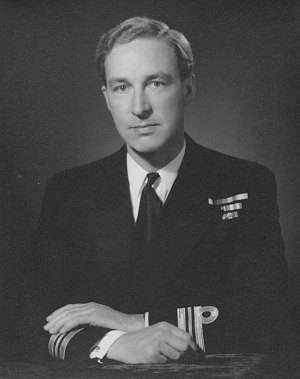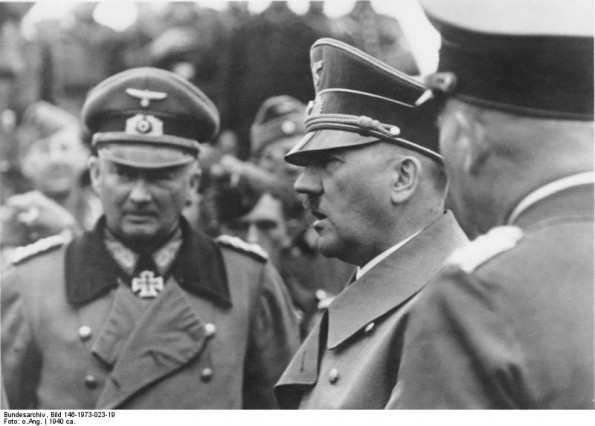Saturday 2 November 1940
 |
| U-31 going on its final dive. |
In the central Pindus Mountain sector, the Italian Julia Division struggles forward and captures the villages of Vovousa, Samarina, and Distrato. This is still 30 km short of their objective, Metsovo, whose capture would have strategic significance (it is a key transit point to Greek supplies). Greek Colonel Konstantinos Davakis, in charge of the two battalions, cavalry and artillery of the Pindus Detachment, is badly wounded during reconnaissance near Fourka. The Greeks work through the night to prepare an ambush of these advanced Italian troops.
On the Coastal Sector, the Italians begin their attack on Kalamas River along the Kalpaki front. It starts to snow, which aids the defense. An Albanian battalion captures the Grabala heights in the Negrades sector and holds it through the night, but otherwise, the attack makes little progress.
In the Koritsa sector, the Greek 9th Infantry Division and 4th Infantry Brigade attack static Italian positions at the border.
The Italian air force bombs Salonika again, killing 200 civilians. Other targets include Corfu, Patras, and Janina. The attack on Salonika is especially strong, with 15 Italian Cant 1007Z bombers escorted by Fiat CR 42 fighters. The Greeks intercept the formation and shoot down three of the Italian bombers.
 |
| A downed Italian Savoia-Marchetti SM-70 bomber, 2 November 1940. |
The Greeks report repelling an Italian naval attack near the Corinth Canal with antiaircraft guns and fighter attacks.
Royal Hellenic Air Force pilot Marinos Mitralexis, out of ammo in his PZL P-24 (serial no: Δ 130) because he already has shot down one bomber, rams another Italian bomber in its rudder, causing it to crash. Mitralexis then lands nearby (his engine is out) and, knowing where the Italian plane crashed, runs over with his pistol and arrests the Italians who parachuted to safety. Mitralexis is promoted to Wing Commander and received Gold Cross of Valour, Greece's highest award.
Turkey, which has declared its neutrality in the Italian/Greek war and warned Bulgaria to stay out also, pointedly keeps 37 divisions on the Bulgarian border "just in case."
European Air Operations: During the day, the Luftwaffe sends a couple of raids against London, but the RAF scatters the German planes, which drop their bombs at random over the Kent/Sussex countryside. The weather is bad during the night, so the RAF bombers stay on the ground today, and the Luftwaffe bombers finish their minor raids by midnight.
 |
| Michael Marwood in later years. |
This is the second time that U-31 goes under, having been sunk in shallow water on 11 March 1940 by the RAF and later raised and repaired. This time, the sinking is permanent, and U-31 still rests where it fell that day. U-31 has sunk 11 ships of 27,751 tons and an additional auxiliary warship of 160 tons.
Prellberg gets off 43-44 of the 45-46 man crew (two ratings are lost) to become POWs. Lieutenant Commander Michael Marwood, the navigator who guides the destroyer by Asdic to the U-boat's location, receives the DSC for the action. At this point in the war there is still some civility at sea, and Marwood lends some of the German officers his own clothes, “but received little thanks. They thought we were mad. As the war became total and cruel, we treated future prisoners very differently!” Michael Marwood passes away on 5 January 2016.
Royal Navy 429 ton tug HMT Rinovia (Chief Skipper T. Fraser RNR) hits a mine in the English Channel off Falmouth, Cornwall, and sinks. There are 14 deaths.
German aerial mines of IX Air Corps sink British 168 ton tug Lea and 148-ton Deanbrook in the River Thames. Six crew perish on the Lea and everyone on board the Deanbrook (apparently also six crew) also perishes. The tugs sink in shallow water and are salvaged for scrap.
British 28 ton drifter Goodwill hits a mine and sinks in the Firth of Forth.
British 138 ton grain schooner Penola collides with another ship during the morning and sinks in the Clyde off Toward Point, Argyllshire (just west of the Toward Lighthouse). The crew abandons ship safely. The ship comes to rest upright in shallow water but later breaks up. Some sources place this incident on November 9th.
Greek 1588 ton freighter Menelaos capsizes in heavy weather and sinks in the outer Owers in the English Channel south of Selsey Bill, West Sussex.
Minelayers HMS Teviotbank and Plover and destroyers HMS Intrepid and Icarus lay minefield BS 44 in the North Sea. The Intrepid itself hits a mine off Hartlepool (it is unclear if it is one that it itself is laying, it appears not), which damages its engines. It limps into Hartlepool for repairs, joining the 50 other Royal Navy destroyers currently under repair.
Royal Navy HMS Campbeltown, one of the destroyers received from the US Navy in the destroyers-for-bases deal, collides with 793-ton Norwegian freighter Risoy. The Campbeltown sustains only minor damage which requires repairs of about three weeks at Liverpool.
Royal Navy Armed Merchant Cruiser Ranpura has a fire onboard which causes minor damage.
Royal Navy submarine Taku (Lt J. F. B. Brown) attacks 8923-ton German freighter Gedania in the Bay of Biscay off the Loire but misses.
Royal Navy submarine Tigris also spots an enemy ship, the Italian submarine Veniero, off the Gironde. Its attack also is unsuccessful. Submarines are difficult for other submarines to attack.
Convoys FN 324 and FN 325 depart from Southend, Convoy OB 238 departs from Liverpool,
U-69 (Kapitänleutnant Jost Metzler) is commissioned.
Royal Navy submarine Tetrarch joins the other Royal Navy submarines making unsuccessful attacks today, missing an Italian freighter off Benghazi.
At Malta, there is an air raid around 12:30 when 20 SM 79 bombers escorted by 30 Macchi 200 and CR 42 fighters fly over the island from the north. There is a massive dogfight. One Macchi 200 is shot down by Hurricanes (pilot killed when chute fails to open), and a second Macchi and two CR 42s badly damaged. The bombs hit Luqa airfield and four houses near Aabbar.
A Maryland of RAF No. 431 Squadron is photographing Taranto Harbor when the pilot is wounded by a fire from an Italian fighter and knocked unconscious. The navigator takes over the controls until the pilot recovers sufficiently to pilot the aircraft back to base.
Spy Stuff: Free French submarine Rubis (CC Cabanier), which was in the port of Dundee, Scotland at the time of the French surrender on 22 June, drops off a British agent at Korsfjord, Norway during the night.
US Military: Rear Admiral John W. Greenslade arrives in Fort-de-France, Martinique. This is a continuation of amicable discussions between the US and the local commander, Vice Admiral Georges A.M.J. Robert, about the French situation there. The French have an aircraft carrier there which is immobilized.
US Secretary of War Henry L. Stimson contracts with a subsidiary of the Pan American Airport Corporation to construct airfields and seaplane bases from the border of French Guiana along the Brazilian coast and down to Uruguay.
American Homefront: Doc Holliday's common-law wife, Hungarian "Big Nose" Kate, passes away at age 89.
Professor F. Bert Farquharson at the University of Washington completes studies he has been conducting of the new Tacoma Narrows Bridge in Washington State. Contracted by the Toll Bridge Authority in March, Farquharson has built a 1:200 scale model of the bridge to try to duplicate in a wind tunnel the vibrations which have given the bridge the nickname "Galloping Gertie." He is successful at this and decides the bridge has a major problem. Farquharson, however, believes one of two solutions should be implemented: drill holes in the bridge's girders to allow wind to pass through or affix wind deflectors. The State, meanwhile, has taken the temporary expedient of tying the bridge spans down with cables. The State plans a meeting with Farquharson on the 6th to discuss the remedies.
November 1940
November 1, 1940: Hitler Irate
November 2, 1940: U-31 Sunk - Again
November 3, 1940: Kretschmer's Master Class
November 4, 1940: Spain Absorbs Tangier
November 5, 1940: Jervis Bay Meets Admiral Scheer
November 6, 1940: San Demetrio Incident
November 7, 1940: Galloping Gertie
November 8, 1940: Italian Shakeup in Greece
November 9, 1940: Dutch Fascists March
November 10, 1940: Fala and Doc Strange
November 11, 1940: Taranto Raid
November 12, 1940: Molotov Takes Berlin
November 13, 1940: Molotov Foils Hitler
November 14, 1940: Moonlight Sonata
November 15, 1940: Warsaw Ghetto Sealed
November 16, 1940: France Keeps Battleships
November 17, 1940: Malta Hurricane Disaster
November 18, 1940: Hitler Berates Ciano
November 19, 1940: Birmingham Devastated
November 20, 1940: Hungary Joins Axis
November 21, 1940: Dies White Paper
November 22, 1940: Italians Take Korçë
November 23, 1940: U-Boat Bonanza!
November 24, 1940: Slovakia Joins In
November 25, 1940: Molotov's Demands
November 26, 1940: Bananas Be Gone
November 27, 1940: Cape Spartivento Battle
November 28, 1940: Wick Perishes
November 29, 1940: Trouble in Indochina
November 30, 1940: Lucy and Desi Marry
2020



No comments:
Post a Comment